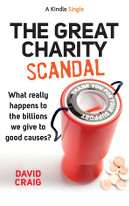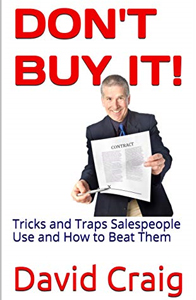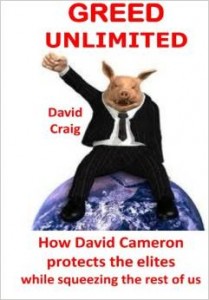(Tuesday blog)
We’re now all familiar with such delightful Covid-19-related words such as “comorbidities” and charming expressions such as “social distancing”. But today I’d like to add to the new Covid-19 lexicon by copying a comment made by a Times reader on the Times website.
Most comments on the Times website are made by people I call ‘keyboard cowards’ – pathetic individuals, typically ‘monday-morning quarterbacks’, who know little to nothing about anything but spend their time bitching and moaning to demonstrate their supposedly superior intelligence but yet who are too spineless and cowardly to use their own names when commenting.
However this comment below quotes someone who actually seems to know what they’re talking about.
The comment deals with something called ‘viral load‘. I found it interesting because it does go some way to explaining why so many otherwise healthy, youngish healthcare professionals have become critically ill and/or died from the Wuhan Chinese plague.
The difference between the Wuhan Chinese plague and, for example, being pregnant is that you either are or you aren’t pregnant irrespective of how many sperm manage to complete their epic journey. However, with the Wuhan Chinese plague, one of the determinants of how ill you may become could be your level of exposure. So, unlike pregnancy, there may be different levels of catching the Wuhan Chinese plague. The comment seems to suggest that if you are exposed to just a few virus thingies, your body can fight against the infection and you’ll just experience mild symptoms. But if you’re, for example, a medical professional and are repeatedly exposed to a large amount of the Chinese plague virus, then you’re more likely to suffer serious illness.
Obviously I don’t have the competence or knowledge to know how accurate the quoted passage is. You must judge for yourselves:
Advice that might save your or your child’s life – Viral Load
Dhushyanthan Surendra Kumar Assistant Medical Director Air Ambulance
Why do we need to shut places where people group? Remember this: VIRAL LOAD There will be a lot about this. Why is it important? With this virus, the amount of virus in your blood at first infection directly relates to the severity of the illness you will suffer.
This isn’t unusual – HIV management is all about reducing viral load to keep people alive longer. BUT it’s very important in COVID-19. So if you are in, say, a pub or religious building or entertainment venue with 200 people and a large number don’t have symptoms but are shedding, you are breathing in lots of droplets per minute and absorbing a high load of the virus. In a crowded space (sic). They become ill over the next 48 hours (sic).
You then three days later wonder why you can’t breathe and end up in hospital. You’d decided, because you were young and healthy, it wasn’t going to be a problem. Wrong. Fortunately but unfortunately because the elderly are isolating quite well, the initial UK data suggests that all age groups above 20 are almost equally represented in ITUs in England. Most of the cases are in London but the wave is moving outwards.
This means that being under 60 and fit and well doesn’t seem to be as protective as we thought. Why? Viral load. This may be skewed simply by the fact that too many Londoners didn’t do as asked and congregated in large groups in confined spaces and got a large initial viral load. They then went home and infected their wider families. Which is why, as London is overwhelmed, we need to shut everything down to save the rest of the UK.
We are a week at most behind London. Our sympathies go out to the families affected in London and the critical care teams battling right now to save as many as they can.
If I sit with one person and catch this virus, I get a small viral load. My immune system will start to fight it and by the time the virus starts replicating, I’m ready to kill it. No medicines will help this process meaningfully hence there is no “cure” for this virus. All we can do is support you with a ventilator and hope your immune system can catch up fast enough. If I sit in the same room with six people, all shedding I get six times the initial dose. The rise in viral load is faster than my immune system can cope with and it is overrun. I then become critically ill and need me (or someone of my specialty) to fix it instead of just being at home and being ok in the end.
THIS BIT IS IMPORTANT: If you are a large family group, remember that by being ill and in the same room, you will make each other ill or “more ill”. If you get sick, isolate just yourself to one room and stay there. Don’t all sit in one room coughing. You will increase the viral load for all of you, reducing your survival rate. A family of six people may produce double the droplets of a family of three in the same space. Maths is important. If one of you is symptomatic, assume you are all shedding and make sure you keep some space. Parents are getting it from their kids because no one is going to stop comforting their child (nor should they) so the parent gets a big hit as well as the child. I don’t think that can be helped.
REMEMBER: THINK ABOUT VIRAL LOAD
And here’s Dominic Frisby to cheer us up a bit:














VERY interesting. Thank you. I hadn’t given consideration to this aspect. Stupid really, since I think we all know that if you’re poorly with some relatively mild virus – a cold for instance – you are more likely to fall ill if you encounter another infection concurrently, because your system is already busy fighting the existing infection. This would explain why the Chinese doctor who first informed the world of COVID-19 became so ill and died. He had I understand been treating a number of COVID patients, so not only encountered repeated doses of the virus, but was undoubtedly exhausted as well. His system was depleted twice over. There is a 36 year old nurse in England who has been nursing COVID patients and is now dangerously ill. Well – as from this evening we are “in lock down”, unfortunately essential because enormous numbers of brain dead UK citizens chose to ignore completely the very sensible advice that they keep a respectable distance from each other in order not to exchange their nasal and oral secretions. They preferred to congregate in bars and pubs and drape themselves over each other and demonstrate their cavalier attitude with “selfies”. I’ve concluded over the past few days that there really is little hope for Western society.
Interesting the crowd listening to Dominic Frisby were less certain about the pandemic scaremongering song than the global warming one. At least Peter Hitchens, Janet Dailey and now Dominic Frisby have dared to challenge the group think and looks like the Donald is about to try too. Think it’s too soon for Donald given how many people are crumbling and willingly giving up their liberty but maybe it’s a gamble that will pay off if the data is as corrupt as it appears.
There’s no need for lockdown or for panic or for the hysteria surrounding the Chinese flu. The state has managed to accrue to itself some extra powers at our expanse, yet permits profiteers and hoarders to thrive. IF we have to have the unnecessary lockdown may we at leat have the state impose substantial punishments on the shopkeepers who are selling goods at grossly inflated prices or who are selling goods only to those citizens are from their own cultural and religious background.
Just opened my windows
I saw this term in relation to the virus on surfaces. It survives but does not replicate and gets less “potent” as time goes on. Therefore, if you do pick it up the viral load is lower and so the risk of a severe infection is less.
We get infections all the time but they are not all deadly. If we get this and recover it really is not a problem so what matters is the fatality rate. This is uncertain mainly because the true number who have it and recover is unknown. It is exactly the same with seasonal flu. But in both cases we know the number identified with the infection and the number of deaths. I have seen information from various sources and they say the same. The risk of death from the virus is about 1% overall and from the seasonal flu it is 10%. Seasonal flu is far more dangerous and we do not have an annual panic. We all need to be asking why?
Risk only becomes meaningful when compared to other risks and this is precisely what the NHS, governments and the media are not doing. Why not? They tell us number of deaths with no reference to other diseases, they tell us the percentage increase with no reference to the numbers. A 50% increase in one day sounds a lot but the actual number is not large. In the UK on average the number of deaths from seasonal flu is 17,000 but it has been as high as 28,000. We have to keep the virus in perspective and this is not being done. Panic and fear is being deliberately created.
It is exactly the same with photographs of the suppose gathering of people outdoors last weekend. They were all taken using telephoto lenses which makes people look closer together. The media should be ashamed and Boris is equally at fault for not speaking about it.
This is the same as the climate crisis. Fear is being spread based on wrong or inaccurate evidence. What is going on? This is the question we need to keep asking. One thing is now certain – when the panic over the virus ends we will have an even bigger panic about restoring the economy.
https://www.sciencedirect.com/science/article/pii/S0924857920300996
Why is MSM igoring this?
Saw this comment in, I think, the Telegraph.
What on earth will be the state of our economy/society when (or if) this is all over?
“This is spot on … very soon the sheer cost of saving lives will appear to virtually all to be too high. Nobody will come right out and say it but at what point does the cost of saving lives make it not worth it ? Shall we trash the entire economic system to save 20,000 lives or is it acceptable that everyone’s incomes, whole industries, countless businesses, household names all go under to prevent a few thousand more deaths ? For now a significant lock down is like a much extended Xmas break for a very large part of the population. Pack the freezer, stay in and watch the TV. But what happens if 20,00 are dead after six weeks and the economy is on the verge of collapse? What if rioting starts and the police cannot keep the peace and people break curfews and power gets cut off? My view (and it is an observation not a moral argument) is that faced with a one in 100 hundred chance of a fatal illness or complete shut down and bankruptcy of the system. .. most people open the door to the 99% chance of survival without a moments hesitation .. and by that stage the government cannot afford to prevent it… and would be foolish to try.”
I normally agree with most of what Thorpe writes, but let’s not delude ourselves. This IS different from normal winter flu. I don’t recall ever seeing a modern developed country like Italy or Spain suffer such a sudden unanticipated death toll that bodies are having to be conveyed away covertly at night, or stored in temporary freezers. Today our Gvt. has just announced the creation of a temporary hospital in London at the Excel Centre of 4,000 – yes, four thousand – beds. Clearly something very nasty indeed is expected to hit the Capital within the next couple of weeks.
So obey the advice to stay away from all people not members of our actual household. Do not crowd onto public transport unless it is genuinely absolutely unavoidable. If we do not respect these very sensible directives, I fear we shall be facing Martial Law – soldiers with guns, not your (invisible) Plod!
William – that is exactly what I have been saying. It should be about risk management not the precautionary principle. Unfortunately, nobody today wants to die to saves somebody tomorrow and politicians who adopt this will not be elected. The human race had no option but to live with risk for thousands of years but as soon as we started to live in larger groups we had leaders who took over the risk. Now we have in the west a population that had no hardship although they moan more than ever. They think that all risk can be eliminated and the government will do it. The world governments have plans for dealing with the virus but they none of them have a plan for dealing with the consequences of their virus plan. The deaths will come afterwards and for years in my opinion.
The reason I can back to the site was however to post this link which in interesting
https://canadafreepress.com/article/a-frankenstein-monster-devouring-the-world
Italy is an exception even with seasonal flue. This paper is interesting :”Investigating the impact of influenza on excess mortality in all ages in Italy during recent seasons (2013/14–2016/17 seasons) by Aldo Rosano et al. You can download it at https://www.sciencedirect.com/science/article/pii/S1201971219303285
STILL READING re the Italian death toll.
300,000 Chinese are legal residents in Italy, many working in the sweat shops of the designer fashion labels. Another 200,000 also live there. Of the first 79 people to die in Italy only one was a white person.
The average age of the Italian coronavirus deaths in Italy is 75.5 . Almost all had other illness.
What is the average of coronavirus deaths in other countries?
In the UK thousands every winter die of flue some years more than others.
The viral overload theory seems very plausible.
People traveling on the packed London tube ever day would be of much greater risk. Mayor Khan cut the number of trains on the main lines operating and will no doubt have contributed to the death toll.
.Why have the press not given it coverage? May I suggest that people who read this blog post it and the name of this blog on readers comments on the Mirror, Daily Mail, The Sun .